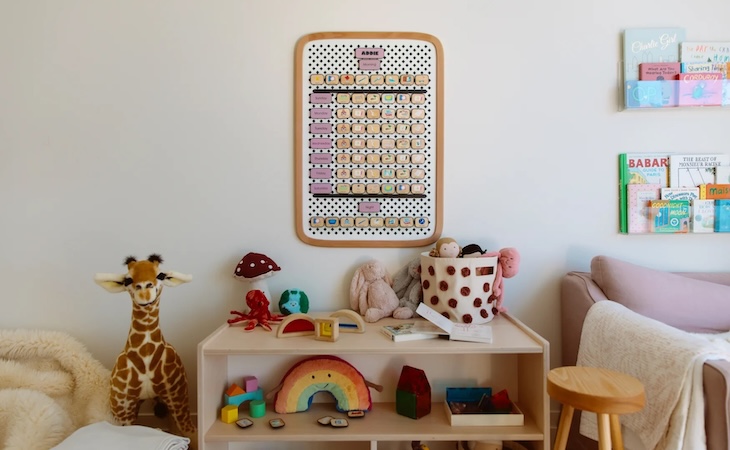Every couple sleeps differently. Some cuddle for eight hours a night, while others prefer to sleep in separate beds. At the end of the day, there’s no correct way to sleep with your partner.
In this article, we take a look at a few of the most common sleeping positions for couples and explain what they might mean for your relationship, according to relationship and body language experts.
Just keep in mind these positions can change over time, especially if you’re in a new relationship or you’ve been having problems of late.
10 of the most common couple sleeping positions and what they mean
It’s important to keep in mind that every couple has different sleeping habits, and they may change as time goes on.
Below, we explore some of the most common couples sleeping positions and what they might say about your relationship—both good and bad.

1. The spooning position
This position, which consists of one partner wrapping their arms around the other while they’re both facing the same direction, is most common at the beginning of a relationship. New couples tend to be drawn to this position because it’s extremely protective.
It’s also common among couples who are comfortable with intimacy and like to keep their significant other close. In long-term relationships, it’s common for partners to switch between who’s the “big spoon” and who’s the “little spoon.”
Overall, this is a fairly sweet position that indicates security.
2. The loose spoon
The loose spoon is similar to the spoon, but it involves a few more inches of space between the couple. This position is a little less intimate, but it still shows security in the relationship. Often, as couples have been together longer, they tend to gravitate toward the loose spoon to show they’re still connected but also independent.
The chasing spoon, another variation, is a slightly lopsided version of the loose spoon. In this position, one partner has moved away from the center of the bed so the other is “chasing” them by moving closer.
This could symbolize one partner is actually reaching toward the other throughout the day for more time or attention, but the partner moving away in sleep wants more independence. It could also suggest one partner is pursuing the other a lot more in their relationship, signifying an imbalance in emotions and effort.

3. The knot
Known as a very intimate position, the knot involves two people wrapped up together, arms and legs tangled up like a pretzel.
This position is most commonly seen at the beginning of a new relationship due to the intense attraction for one another, but it usually fades over time. This position could signify codependency due to how tightly wound the couple is.
The unraveling knot is a variation of this sleeping position. In the unraveling knot, the couple is wrapped in a knot at the beginning of the night but then they unravel as the night goes on to find their own sleeping positions independent of one another.
If you start with a knot and move to the unraveling knot, it shows a combination of both togetherness and independence.

4. Back kissers
In this position, the couple sleeps with their backs facing one another, but there is contact along the spine and butt. Couples still remain connected, almost like hand-holding throughout the night.
This sleep position strikes the balance of being connected with your partner but being independent enough to face opposite directions.

5. The liberty lovers
Here, the couple is still sleeping with their backs facing one another, but there’s no contact between them at all. This is most commonly seen in long-term relationships or marriages.
Many people may think this is a bad sign in a relationship, but it shows both independence and security. You’re still a couple, but you’re comfortable enough to sleep with some space between the two of you.

6. The leg hug
This position can mean a few different things, depending on whether both feet are hugging or whether one person is chasing the other’s leg. This is another common position for couples in a long-term relationship or marriage. It still shows the couple is connected, but they’re comfortable being independent of one another.
However, if only one person is chasing the other’s leg, it could indicate wanting more intimacy than the other is willing to provide. It could also occur after a huge argument when one partner wants to make up as soon as possible.

7. The nuzzle
In the nuzzle position, one partner chooses to sleep with their head on the other’s shoulder or chest, creating close intimacy and a sense of comfort between the two.
It’s a fairly nurturing position, but symbolically the person whose head is facing up shows self-assuredness in taking care of the other person. The one who has their head on their partner’s chest is the one asking to be taken care of but is still independent enough to do their own thing.
8. The space hog or starfish position
Unfortunately, if one partner is taking up a ton of space in bed, it isn’t the best sign for your relationship. Commonly referred to as the space hog or “starfish” sleeping position, this is when one person spreads out wide, while the other person has to mold around them.
This often indicates a selfish partner who puts their needs over the relationship. This person either wants to have more power and control or already has it.
If the partner taking up space chooses to sleep higher up than the other, it could also indicate more confidence and a desire for a submissive significant other.

9. Stomach sleepers
Couples sleeping on their stomachs, not touching one another, are usually doing it out of fear. This might not just be fear of the relationship itself—it could be the fear of losing a job, health, or anything, really.
Sleeping facedown protects the body, so it could also signify a lack of trust in the relationship.

10. The fetal position
Cozy and comforting, the fetal position is the most common sleeping position for individuals. Some couples might sleep in a combination between fetal position and spooning, while others might sleep face-to-face in the fetal position. Both of these signify a comforting and calm relationship, where both partners feel equal.
However, sleeping in the fetal position is known to cause back pain by putting unnecessary strain on your muscles and spine. To avoid this, you can try sleeping on your back or straightening out your legs a few nights per week.
FAQs
What is the best sleeping position for couples?
At the end of the day, there is no best sleeping position for couples. While the way you sleep may be able to help indicate problems in your relationship, you should focus on finding a healthy and comfortable position for both you and your partner.
Overall, the most important thing is finding a position that will give you and your partner a good night’s sleep.
What about sleeping separately?
Some couples choose not to sleep together even if they live in the same house—and that’s completely OK. Maybe you find your partner’s snoring impossible to deal with or you have such differing schedules you find it easier to crash on your own.
Couples who choose to sleep separately should find other ways to create intimacy and physical contact. For example, lying together for a few minutes of pillow talk can help create the same intimacy that sleeping in the same bed does.
Discover the perfect bed frame and mattress for you and your partner
Almost every couple divides the bed down the middle to claim a side of the bed—that’s a given. But when it comes to your sleeping preferences, how do you know if you’ll match up with the way your partner sleeps, their preferred firmness level, and what size bed they like?
Saatva’s online mattress quiz can help. Take the quiz with your partner and see what mattress is ideal for both of you to sleep on. Whether you two want to snuggle or have your own space, Saatva has the perfect sleep solution for you.







